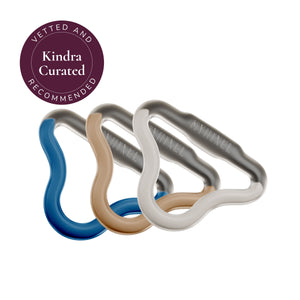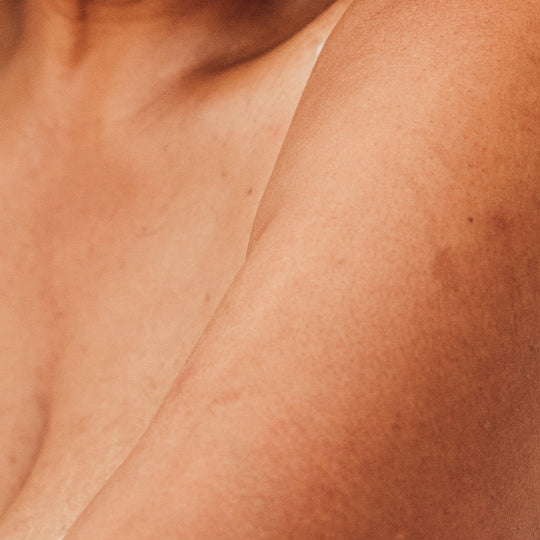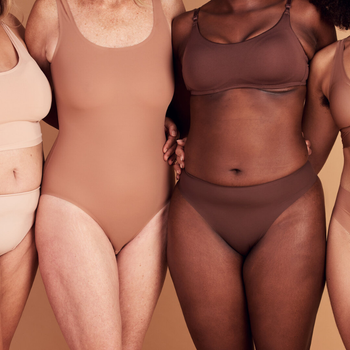Women going through menopause experience significant changes in their skin due in part to the hormonal changes going on in their bodies. However, did you know that iron overload, caused by the cessation of menstruation during and after menopause, is a primary contributor to skin aging and photoaging?
Dr. Xi Huang, one of the world’s leading researchers on the correlation between iron levels and health, and founder of i-On® Age Disrupting Skincare, explains how excess iron negatively affects skin health for women, especially during the transition into, and after, menopause.
1. Iron levels in the form of ferritin, the body’s iron storage protein, rise 40% during the 10-year transition period from pre-menopause to post-menopause.
Beginning in the mid-forties age range, skin gradually begins to become duller, less luminous and more uneven due to the buildup of iron in our skin that accompanies the cessation of menstruation.
Our bodies naturally eliminate excess iron through menstruation and skin exfoliation (peeling), but as we enter perimenopause—and as menstruation ends—our skin begins “pumping more iron.”
2. Much like rust on metal, iron’s reaction with oxygen and UV light causes oxidative stress to the skin.
While iron is crucial for healthy physiological functions, too much iron can have detrimental effects on skin’s appearance and health. More than a century of research has shown that excess iron in ferritin is the root cause of free radical formation and damage to cellular proteins in skin.
Because iron accumulates in the skin as we get older, menopausal skin is more sensitive to environmental factors, and when the skin is exposed to these factors –UV radiation, blue light, pollution and other irritants– ferritin unleashes iron and forms free radicals in skin, leading to an increase in wrinkles, discoloration, loss of elasticity and other signs of aging.
Think of the corrosive damage the environment has on metal, like a rusty bicycle.
Until now, antioxidants have been our best defense against this damage—but antioxidants can only attempt to fight oxidative stress by neutralizing free radicals in the skin.
i-On® Age Disrupting Skincare’s patented, proprietary De-Ironizing Inducer (DII®) Technology removes iron from ferritin before it is converted to skin-aging free radical – something no skincare technology or product has done before.
By actually removing excess iron from skin— virtually eliminating the formation of skin-aging free radicals that cause oxidative stress and visible signs of aging— DII® Technology works one step earlier than anything else on the market.
3. Our bodies do not need the excess iron that gets excreted to the surface of our skin.
Iron is metabolized on a daily basis. It is absorbed from our diets and excreted through the skin on a daily basis.
Regardless of an individual’s dietary regimen, the cessation of menstruation and transition into menopause adds more iron to the body, resulting in iron overload on the skin. Food contains sufficient iron to maintain the body iron balance that is needed to perform critical functions. Even when an individual is anemic (has low body iron levels), there is iron excretion in the skin, which causes skin aging.
CLICK HERE for an exclusive 15% Kindra discount offer to experience the groundbreaking effects of i-On® Age Disrupting Skincare, and to sign up for newsletters to learn more about iron’s effect on skin aging.
ABOUT DR. XI AND i-On® Age Disrupting Skincare
Founded by Dr. Xi Huang, one of the world’s leading researchers on the correlation between iron levels and health, i-On® Age Disrupting Skincare is a
groundbreaking beauty brand featuring proprietary age-disrupting technology stemming from over a century of research. After finding that iron overload
caused by the cessation of menstruation after menopause is the key cause of skin aging and photoaging, Dr. Xi developed the cornerstone of i-On® Age
Disrupting Skincare: De-Ironizing Inducer (DII®) Technology, which removes iron from ferritin before it is converted to skin-aging free radicals. For more
information, visit www.iOnSkincare.com or follow on social media @iOnSkincare.
To access Dr. Xi’s white paper, “Identifying the Most Effective Target Against Postmenopausal Skin Aging…And Introducing a First of Its Kind Treatment,” please visit: https://ionskincare.com/pages/white-paper.
Want more helpful insights? Take Kindra's Hormone Assessment to get personalized recommendations for your top concerns.
The Menopause Quiz
Leave a Reply
Tags: body menopause 101














